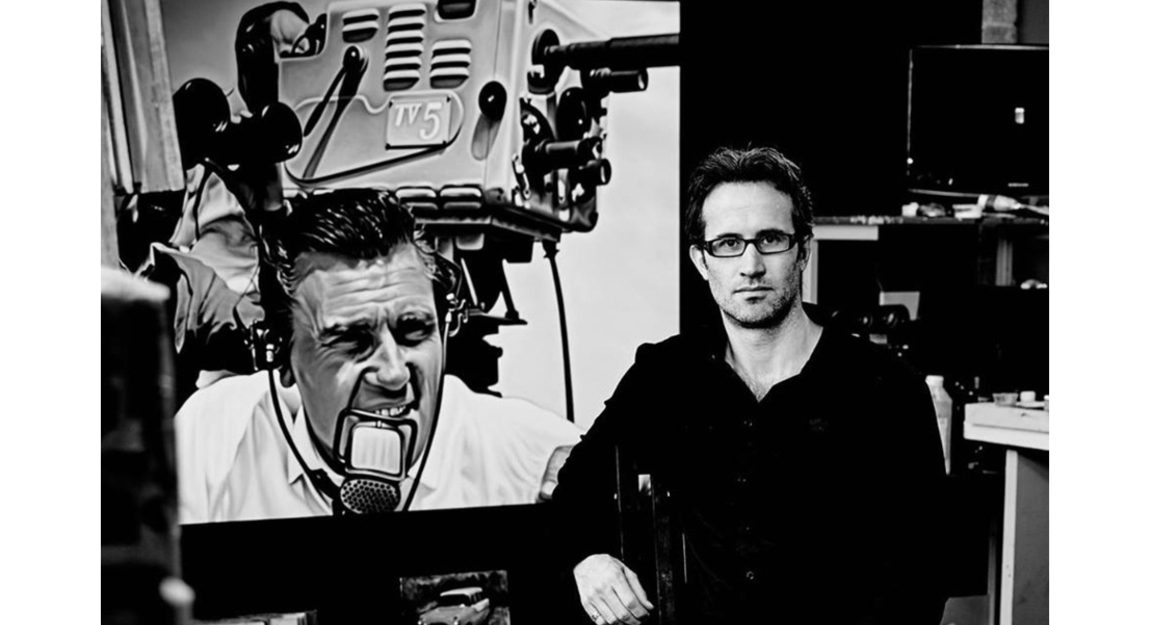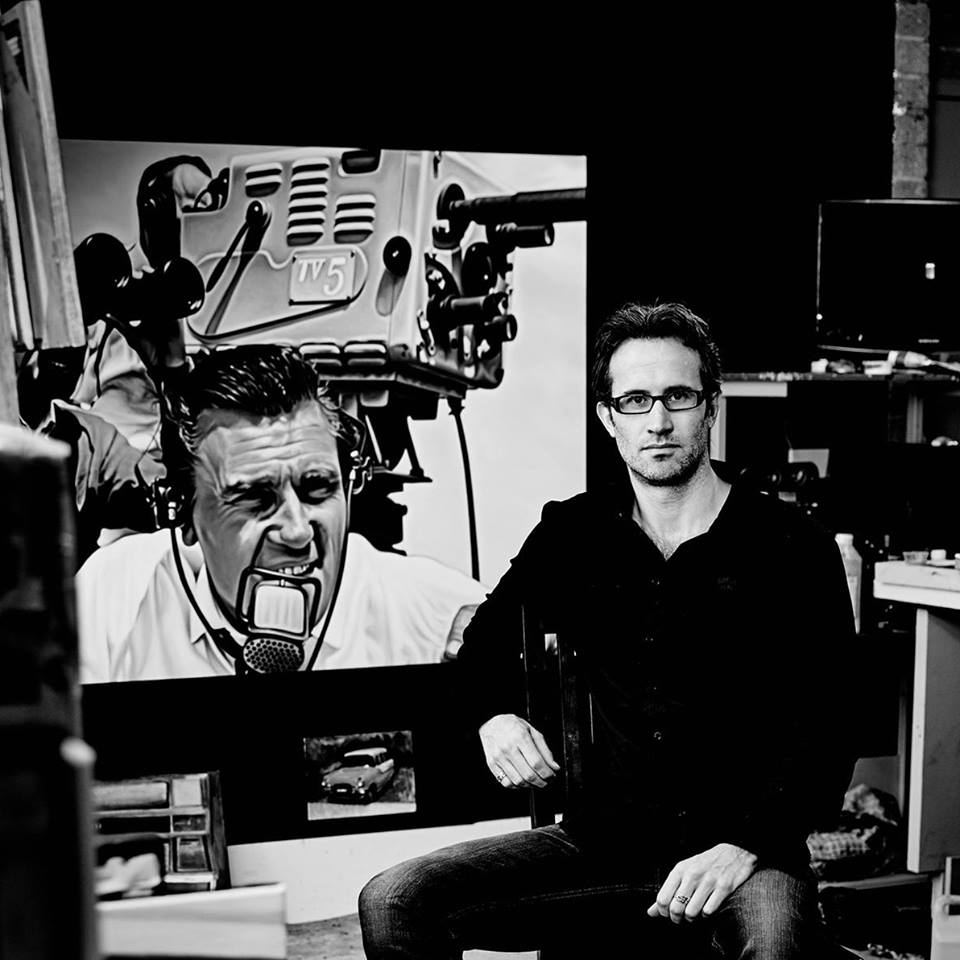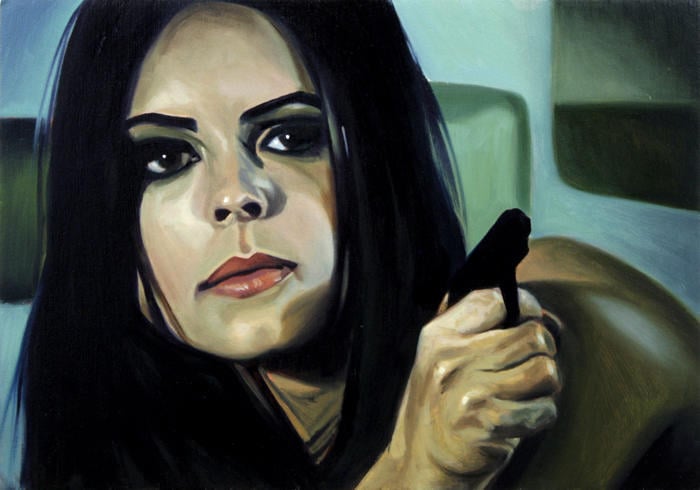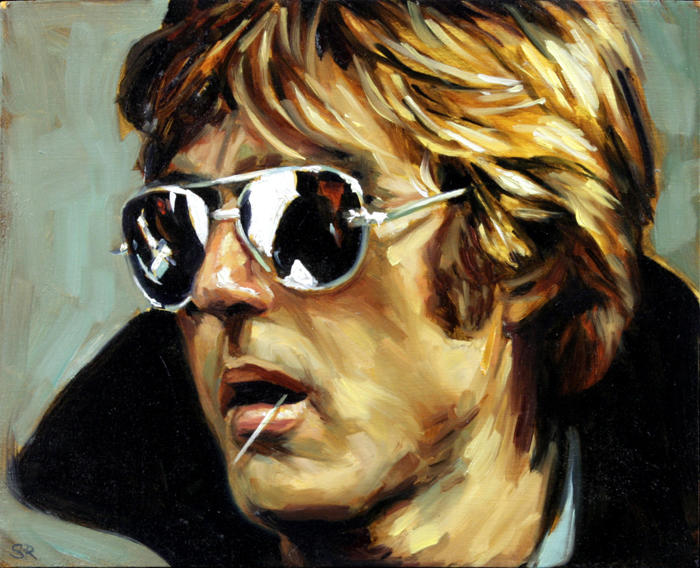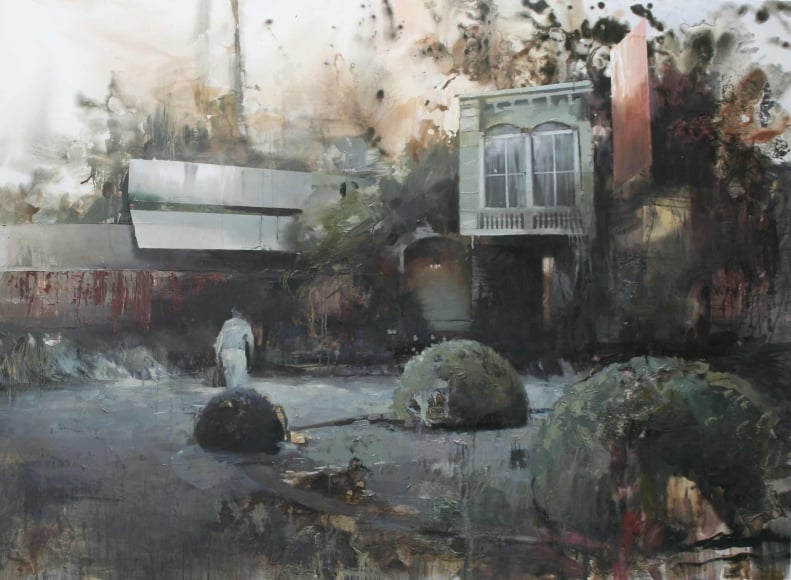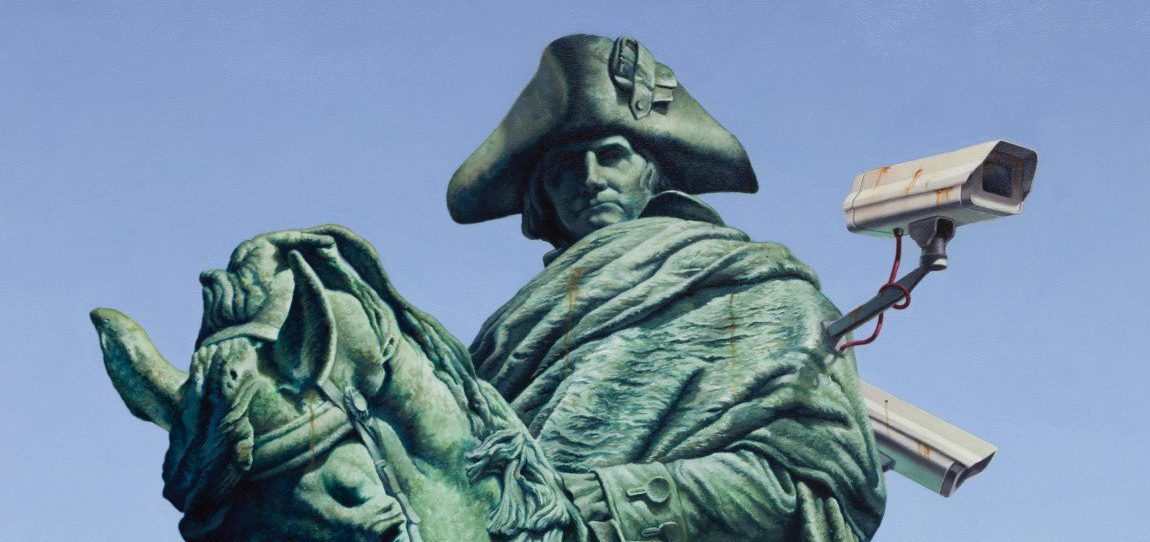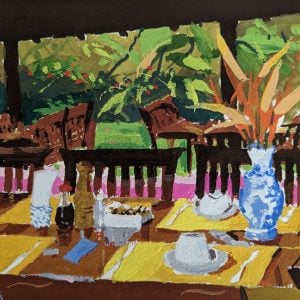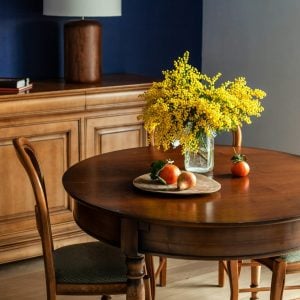What Makes an Artist: Steve Rosendale
Steve Rosendale is nostalgic for a past that’s not his own. He paints vibrant scenes from Hollywood in the early 1960s that evoke its fantastical glamour, as well as its real grit. He believes that “we can sense the age and gravity of a thing without having any prior experience or knowledge of it.”
The bygone beauty he strives to capture is “fleeting, unobtainable and intangible”, the kind found in momentary looks and gestures; he says “to create a work of art from that scene is to extend that glimpse of beauty for a few moments more.”
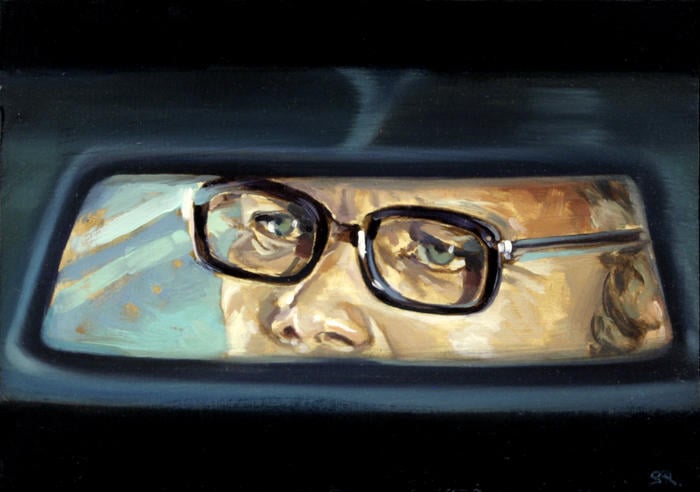 Rear View Mirror by Steve Rosendale
Rear View Mirror by Steve Rosendale
It’s no wonder Steve admires and seeks inspiration from Hollywood actor, director and photographer Dennis Hopper, who passed away not long ago. He talks about how Hopper “would take images of actors around the Hollywood studios in the ’60s while he was on break or waiting for a part. He had an amazing eye for composition and his work has had a huge influence on the way I paint. If I could hang out with him on a photo shoot in the 1960s that would definitely be a dream.”
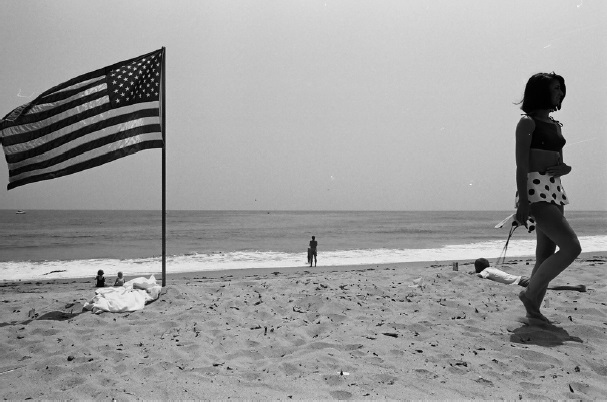 Untitled (Venice and Malibu), by Dennis Hopper, 1964. Source: artnet
Untitled (Venice and Malibu), by Dennis Hopper, 1964. Source: artnet
Even though Steve himself may never have that opportunity, his time-machine-like paintings certainly come close to transporting the viewer to those very movie sets. He expertly pinpoints a passing facial expression and draws out its ephemeral magic with light and shade that feels rich and unflinching. In other words, it’s worth looking at the art, rather than just watching the film.
Steve elucidates a little on the development of his technique: “Lately I have begun to move away from photo realism and into a looser more abstract style of work. In the past I would begin a painting by doing a perfect or accurate drawing and then simply colour it in. This was fun to do in the learning stages but once I had mastered it it became like a chore and a very robotic process.”
His recent work has involved experimentation with “what’s known as a ‘Notan’ background. There is no drawing at all in the beginning, just large shapes and areas of colour that I slowly ‘pull’ the painting out of.” Perhaps this explains the je-ne-sais-quoi, dynamic quality of his work.
Aside from the effect that this more spontaneous technique has on the finished product, he also says “I find it way more interesting and exciting to allow a series of mistakes to build the work from, rather than simply filling in [the picture].”
Steve has an accumulating myriad of artistic influences, not all of whom align quite so closely with his own style. “At the moment I am loving some of the painting that is coming out of the ‘darkest’ corners of Europe, such as Daniel Pitin, Zolt Bodoni and Adrian Ghenie. They are doing amazing things with surrealism and a very loose style of work that still shows a mastery of drawing.”
First Guest by Daniel Pitin, 2011. Source: Nicodim Gallery
He goes on to talk about how, despite admiring others’ practice, he might seek to emulate or adapt only certain aspects of it: “I am also looking at artists like William Wray and Jennifer A McChristian from California. There is a whole new ‘plein-air’ movement happening over there and they are some of the leading figures. I am not so much into going out into the landscape to paint, I prefer to paint from photographs, but I love the techniques, compositions and effects that these guys are getting.”
You can buy Steve’s paintings online here.

